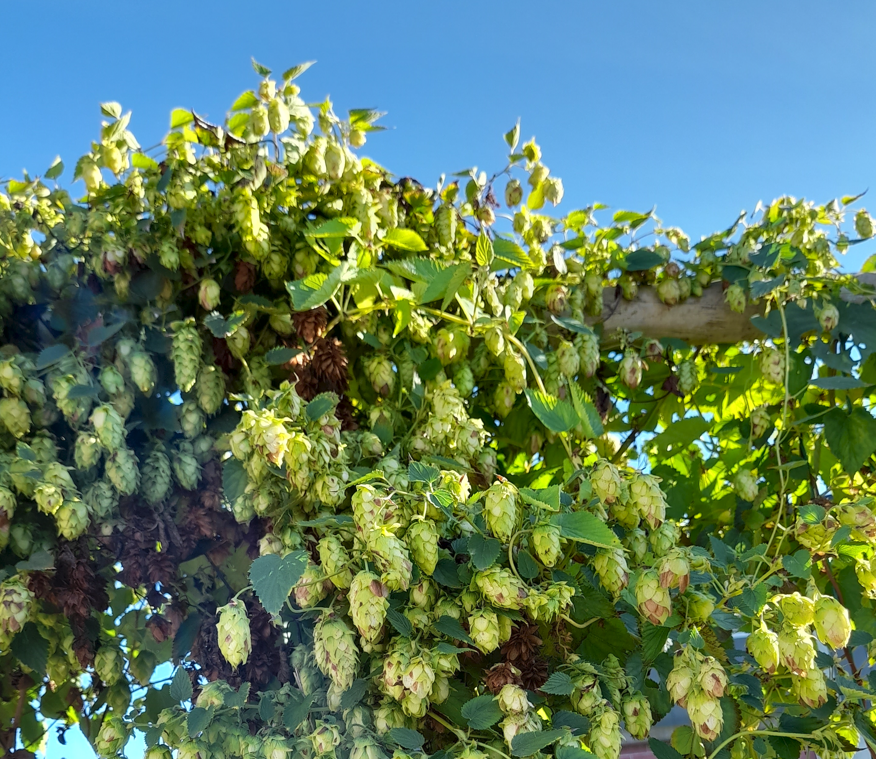| "Descrizione" by Fillp (3536 pt) | 2022-Dec-02 19:38 |
Review Consensus: 10 Rating: 10 Number of users: 1
| Evaluation | N. Experts | Evaluation | N. Experts |
|---|---|---|---|
| 1 | 6 | ||
| 2 | 7 | ||
| 3 | 8 | ||
| 4 | 9 | ||
| 5 | 10 |
Humulus lupulus extract is the extract of the dried flowers and leaves of the hop and extracted with carbon dioxide and water (the most environmentally friendly process) or with traditional solvents such as ethanol and methanol, acetone, diethyl ether or ethyl acetate and energy-intensive methods. Since solvents produce harmful residues that can remain in the final product, careful control and close monitoring of the product is necessary. Temperature, pressure and operating conditions can change the composition of the extract.
It appears in the form of a brown-coloured powder:

What it is used for and where
Cosmetics
The flavonoids present in the extract have anti-inflammatory and antimicrobial activity.
Medical
In the phytochemical composition of hop extract, we find polyphenols such as epicatechin and gallocatechin that determine antioxidant activity. Xanthohumol, an interesting flavonoid, is present in 1% of the female hop fruit and is credited in the scientific literature with potential antineoplastic and chemopreventive activities as it prevents cancer cell invasion by increasing the expression of cytoprotective enzymes with its anti-inflammatory action.
Food
It imparts the bitter taste to the beer.
Typical commercial product characteristics Humulus lupulus extract
| Appearance | Yellow Brown powder |
| Assay | 2% flavonoid |
| Mesh Size | 95% pass 80 mesh |
| Residue on Ignition | ≤2.5% |
| Loss on Drying | ≤3.5% |
| Heavy Metals | ≤10ppm |
| Total microbial plate | ≤1000cfu/g |
| Yeast & Mould | ≤100cfu/g |
| Xanthohumol | 1%~8% |
| Flavone | 4%~10% |
| Chemical Safety |  |
 |  |
- Molecular Formula C61H88O8
- Molecular Weight 949.3
- CAS 8060-28-4
- UNII
- EC Number 232-504-3
- DSSTox Substance ID CC1=C2CCC2=CCC(=CCC1)C.CC(C)CC(=C)C1=C(C(=C(C(C1=O)(CC=C(C)C)O)O)CC=C(C)C)O.CC(C)CC(=O)C1=C(C(=C(C(C1=O)(CC=C(C)C)CC=C(C)C)O)CC=C(C)C)O
- IUPAC 3,5-dihydroxy-2-(3-methylbutanoyl)-4,6,6-tris(3-methylbut-2-enyl)cyclohexa-2,4-dien-1-one;(4E,8E)-4,8-dimethylbicyclo[7.2.0]undeca-1,4,8-triene;3,5,6-trihydroxy-4,6-bis(3-methylbut-2-enyl)-2-(4-methylpent-1-en-2-yl)cyclohexa-2,4-dien-1-one
- InChl=1S/C26H38O4.C22H32O4.C13H18/c1-16(2)9-10-20-23(28)22(21(27)15-19(7)8)25(30)26(24(20)29,13-11-17(3)4)14-12-18(5)6;1-13(2)8-9-17-19(23)18(16(7)12-15(5)6)21(25)22(26,20(17)24)11-10-14(3)4;1-10-4-3-5-11(2)13-9-8-12(13)7-6-10/h9,11-12,19,28-29H,10,13-15H2,1-8H3;8,10,15,23-24,26H,7,9,11-12H2,1-6H3;4,7H,3,5-6,8-9H2,1-2H3/b;;10-4+,12-7?,13-11+
- InChl Key WOFBPYVSLWNDPQ-HCLWIVLTSA-N
- SMILES CC1=C2CCC2=CCC(=CCC1)C.CC(C)CC(=C)C1=C(C(=C(C(C1=O)(CC=C(C)C)O)O)CC=C(C)C)O.CC(C)CC(=O)C1=C(C(=C(C(C1=O)(CC=C(C)C)CC=C(C)C)O)CC=C(C)C)O
- MDL number
- PubChem Substance ID
- FEMA 2578 2579
Hop (Humulus Lupulus L.) belongs to the family of Cannabaceae, but has been included in the order Rosales since 2003.
It is an annual climbing plant that develops in temperate and cold climates.

- The most common species of Humulus are:
- Humulus Lupulus
- Humulus japonicus
- Humulus yunnanensis
In its composition we find the polyphenols (they exert antioxidant activity), which constitute 3-6% of the dry substance of the cone. Xanthohumol is the most important prenylated chalconium in terms of concentration and biological activity. It constitutes 80-90% of all prenylated flavonoids (1).
It is used in beer processing (the cones of the female hop plants are mainly used as an ingredient for the brewing industry) to give it a bitter taste.
The component responsible for the characteristic scent of the hops is the geranium acid which has unique characteristics. This compound is not an "odour-active", but acts as an enhancer of the terpenoids that give the classic scent (2).
Hop is also used in the pharmaceutical and medical sector as a sedative (3), sleeping pill, pain-reliever.
For more information:
References_____________________________________
(1) Hop (Humulus lupulus L.) Extract and 6-Prenylnaringenin Induce P450 1A1 Catalyzed Estrogen 2-Hydroxylation. Wang S, Dunlap TL, Howell CE, Mbachu OC, Rue EA, Phansalkar R, Chen SN, Pauli GF, Dietz BM, Bolton JL. Chem Res Toxicol. 2016 Jul 18;29(7):1142-50. doi: 10.1021/acs.chemrestox.6b00112.
(2) Identification and Characterization of Geranic Acid as a Unique Flavor Compound of Hops ( Humulus lupulus L.) Variety Sorachi Ace. Sanekata A, Tanigawa A, Takoi K, Nakayama Y, Tsuchiya Y. J Agric Food Chem. 2018 Nov 21;66(46):12285-12295. doi: 10.1021/acs.jafc.8b04395.
(3) Sedating effects of Humulus lupulus L. extracts. Schiller H, Forster A, Vonhoff C, Hegger M, Biller A, Winterhoff H. Phytomedicine. 2006 Sep;13(8):535-41.
| Evaluate |
